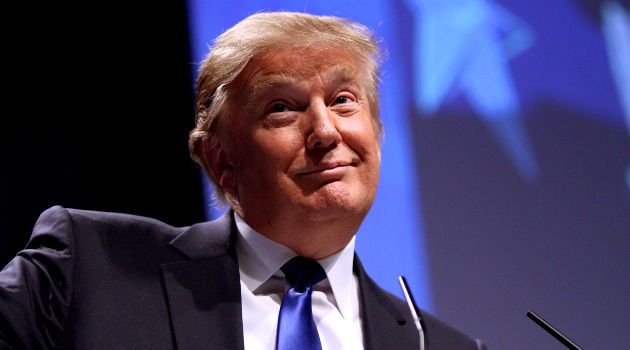With the election less than two months away, there’s a lot of discussion and debate about Trump’s performance.
 I put together a report card last year showing that his economic policies have been a mixed bag, with good grades on tax and regulation, but bad grades on trade and spending.
I put together a report card last year showing that his economic policies have been a mixed bag, with good grades on tax and regulation, but bad grades on trade and spending.
Today, let’s focus specifically on fiscal issues and try to identify the best and worst changes that have occurred during his presidency.
Let’s start with the good news.
For what it’s worth, I’m somewhat conflicted between two different provisions of the 2017 tax reform.
I’m a huge fan of the cap on the state and local tax deduction. For years, I had been arguing that it was very foolish for the federal tax system to subsidize high-tax states.
So I was delighted that the 2017 law restricted this subsidy (and I’m further delighted that we’re already seeing a positive impact with people “voting with their feet” against states such as New York, Illinois, and California).
However, that reform is not permanent. Like many other provisions of that law, it automatically expires at the end of 2025.
Which is why I’m going to choose the lower corporate tax rate as Trump’s best policy. Not only is that reform permanent (at least until/unless Joe Biden takes office),  but it was enormously important for American competitiveness since the United States used to have the highest corporate tax rate in the developed world.
but it was enormously important for American competitiveness since the United States used to have the highest corporate tax rate in the developed world.
And the rate is still too high today, especially if you include the impact of state corporate tax rates, but at least the 2017 reform took a big step in the right direction.
And that big step is good news for jobs, wages, investment, and competitiveness.
Now for the bad news.
I could make the case that Trump’s overall spending increase is the problem.
Indeed, in a column for Reason, Matt Welch points out that Trump has not been a fiscal conservative.
The most traditional way to measure the size of government is to count how much money it spends. In Barack Obama’s last full fiscal year of 2016…, the federal government spent $3.85 trillion… In fiscal year 2020, before the coronavirus pandemic triggered a record amount of spending,
the federal government was on course to cough up $4.79 trillion… So under Trump’s signature, before any true crisis hit, the annual price tag of government went up by $937 billion in less than four years—more than the $870 billion price hike Obama produced in an eight-year span… You can argue plausibly that Joe Biden and the Democratic Party will grow the government more. But the fact is, the guy railing against socialism…has grown spending faster than his predecessor and shown considerably less interest in confronting the entitlement bomb.
All of this is true, but I want to focus on specific policies, not just the overall spending performance.
Which is why I would argue that Trump’s worst fiscal policy is captured by this table from the Committee for a Responsible Federal Budget.
It shows what Trump promised compared to what he delivered and I’ve highlighted his awful record on non-defense discretionary spending (which is basically domestic spending other than entitlements). He promised $750 billion of reductions over 10 years and instead he saddled the American economy with $700 billion of additional increases.
P.S. Click here if you want background info on the different types of federal spending. But all you probably need to know is that many parts of the federal government that shouldn’t exist (Department of Education, Department of Agriculture, Department of Housing and Urban Development, Department of Transportation, etc) get much of their funding from the non-defense discretionary budget.
P.P.S. Trump has failed to address entitlements, which is reckless, but that’s a sin of omission. The increase in non-defense discretionary is a sin of commission.
P.P.P.S. I also thought about listing Trump’s failure to follow through on his proposal to get rid of taxpayer subsidies for the Paris-based Organization for Economic Cooperation and Development.
———
Image credit: Gage Skidmore | CC BY-SA 2.0.


